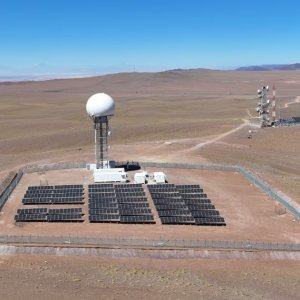
Mexico City Bets on Solar Power to Address Energy Poverty
 By María José Goytia | Journalist and Industry Analyst -
Thu, 08/04/2022 - 12:03
By María José Goytia | Journalist and Industry Analyst -
Thu, 08/04/2022 - 12:03
Mexico City faces a high percentage of energy poverty among its inhabitants in vulnerable areas. To combat the issue, the city’s government found a strong ally in solar energy technology.
According to the CDMX Energy Transition Diagnosis, published in June by the city's Ministry of Economic Development (SEDECO), the German Cooperation for Sustainable Development in Mexico (GIZ) and the Climate Initiative of Mexico (ICM), 21.2 percent of the inhabitants of the country's capital live in energy poverty. Considering data from the 2020 Population Census prepared by INEGI, this is equivalent to 1.95 million inhabitants.
"In this area of the city we are the overlooked ones, we have to live without electricity for several days… because there is no coverage from CFE or other services such as telephones. Gas here is expensive, so we still heat water with wood from falling trees or twigs," said Obdulia, an inhabitant of the Camino Panamericano area in Santa Rosa Xochiac in an interview with El Universal.
The diagnosis document indicates that among the almost two million inhabitants in energy poverty conditions, 19.6 percent of households have no efficient refrigerators, 2.7 percent lack gas or electric stoves, 1.4 percent do not have access to water heating, 1.2 percent are deprived entertainment equipment and 0.5 percent lack lighting. This shortfall of access to electricity has a strongly negative impact on health due to the use and burning of firewood and charcoal for cooking and heating.
"Social programs do not reach this area of the city. The mayors do not tend to us. Electricity, water and drainage are issues that they always promise to resolve, although we have been living in the area for more than 30 years. They say that we do not belong to any mayor's office, we are the exiles of the city," stressed Obdulia.
Due to the energy poverty figures, Fadlala Akabani, Head, SEDECO, emphasized that the city government is working with CFE to work on the areas that lack access to electricity. "We are talking about the most remote areas of the city, such as Tláhuac, Milpa Alta and the highest area of Tlalpan. Together with CFE, we are working to correct this situation regarding a permanent electricity supply. We need to work there to guarantee electricity for the whole city," said Akabani.
One of the main bets of Mexico City’s government has been its Solar City strategy, which seeks to promote distributed generation as a source of electricity and thermal generation for homes and businesses in the capital. Ciudad Solar is a means to reduce energy poverty by solving problems of access to energy through photovoltaic systems or solar heaters in communities or populations with little access to conventional electricity.
















